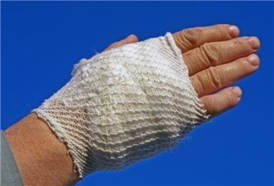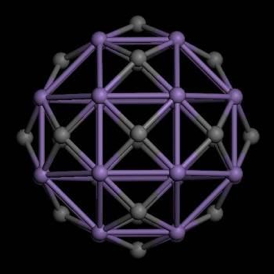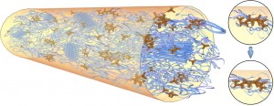Science
When galaxies switch off

- Read more
- 293 reads
Galaxies Fed by Funnels of Fuel

Created with the help of supercomputers, this still from a simulation shows the formation of a massive galaxy during the first 2 billion years of the universe. Hydrogen gas is gray, young stars appear blue, and older stars are red. The simulation reveals that gas flows into galaxies along filaments akin to cosmic bendy, or swirly, straws.
- Read more
- 333 reads
Auto lubricant could rev up speed of medical imaging

Shown is an experimental photodetector made out of amorphous silicon and molybdenum disulfide (MoS2). The two semiconductors together form a high speed photodetector.
- Read more
- 413 reads
Faster Treatment of Third-Degree Burns by Nanofibrous Coatings

- Read more
- 425 reads
VCU Physicists Discover Theoretical Possibility of Large, Hollow Magnetic Cage Molecules: New molecules could be larger than the original Buckminster fullerene with potential applications in technology and health care

Illustration depicts a Mn24C18 cluster carrying a magnetic moment of 70 Bohr magnetons.
- Read more
- 386 reads
Tiny, brightly shining silicon crystals could be safe for deep-tissue imaging: In a new study, the crystals had no toxic effects in non-human primates

Bright light emission from silicon quantum dots in a cuvette. The image is from a camera that captures the near-infrared light that the quantum dots emit. The light emission shown is a psuedo color, as near-infrared light does not fall in the visible spectrum.
- Read more
- 522 reads
Tetrapod Quantum Dots Light the Way to Stronger Polymers: Berkeley Lab Researchers Use Fluorescent Tetrapod Quantum Dots to Measure the Mechanical Strength of Polymer Fibers

Fluorescent tetrapod quantum dots or tQDs (brown) serve as stress probes that allow precise measurement of polymer fiber tensile strength with minimal impact on mechanical properties. Inserts show relaxed tQDs (upper) and stressed tQDs (lower).
- Read more
- 380 reads
Novel Nanostructures Synthesized to Adsorb Toxic Ions from Polluted Water

- Read more
- 378 reads
Elementary Physics in a Single Molecule

The molecule of about 2 nm in size is kept stable between two metal electrodes for several days.
- Read more
- 386 reads
Human Rights
Fostering a More Humane World: The 28th Eurasian Economic Summi

Conscience, Hope, and Action: Keys to Global Peace and Sustainability

Ringing FOWPAL’s Peace Bell for the World:Nobel Peace Prize Laureates’ Visions and Actions

Protecting the World’s Cultural Diversity for a Sustainable Future

Puppet Show I International Friendship Day 2020


